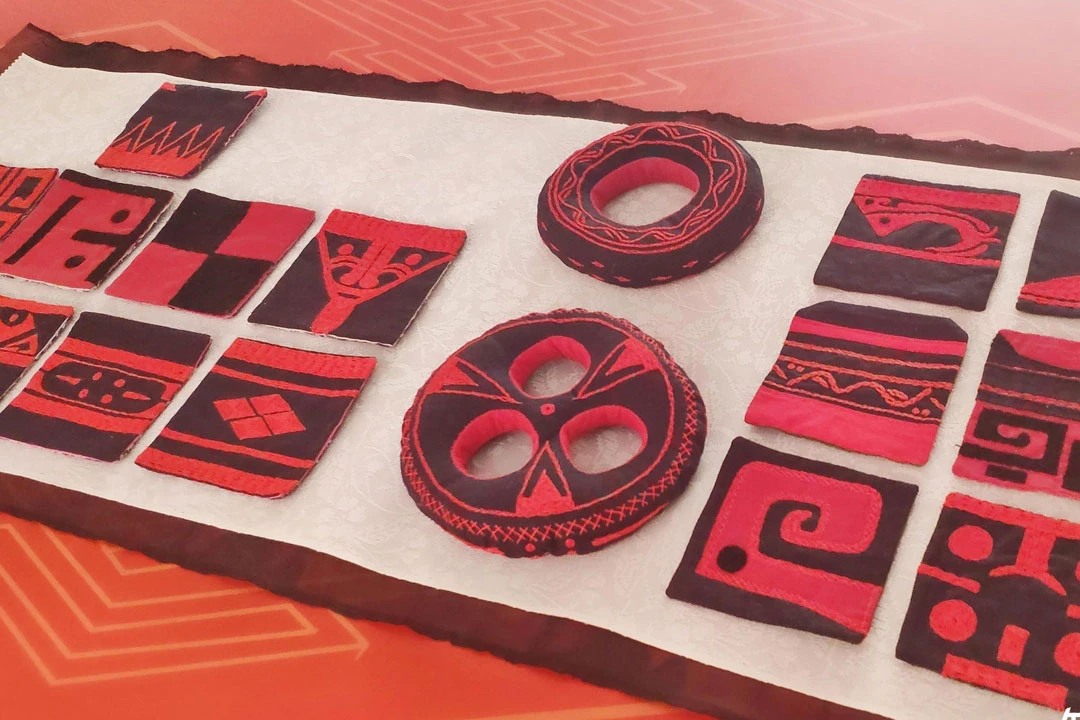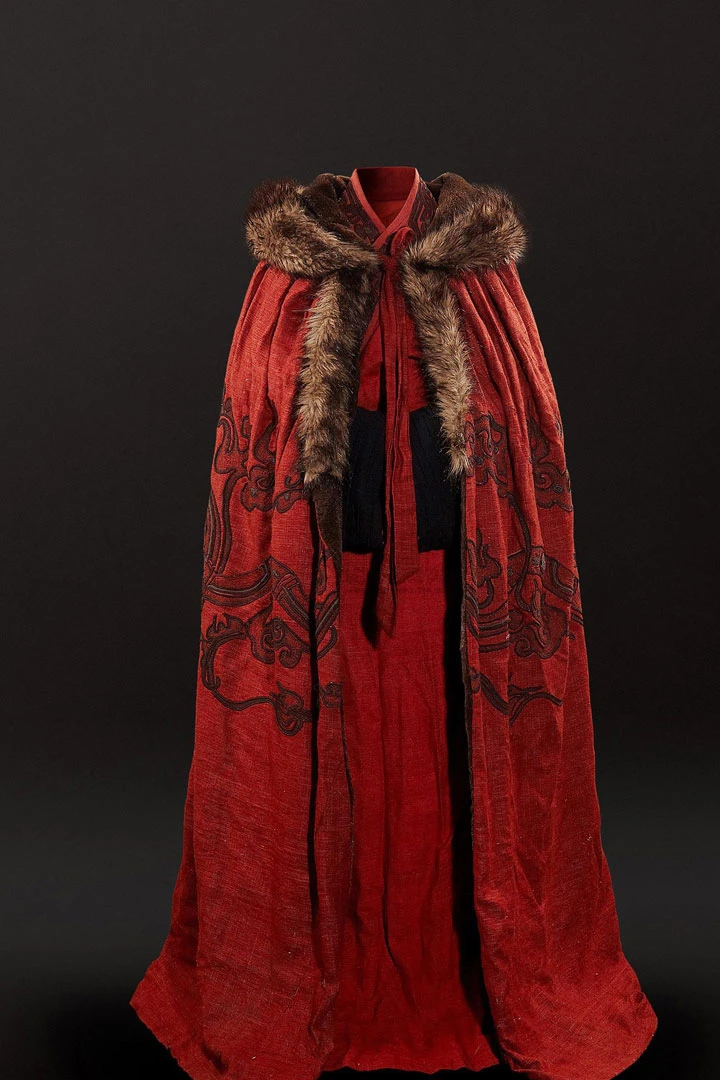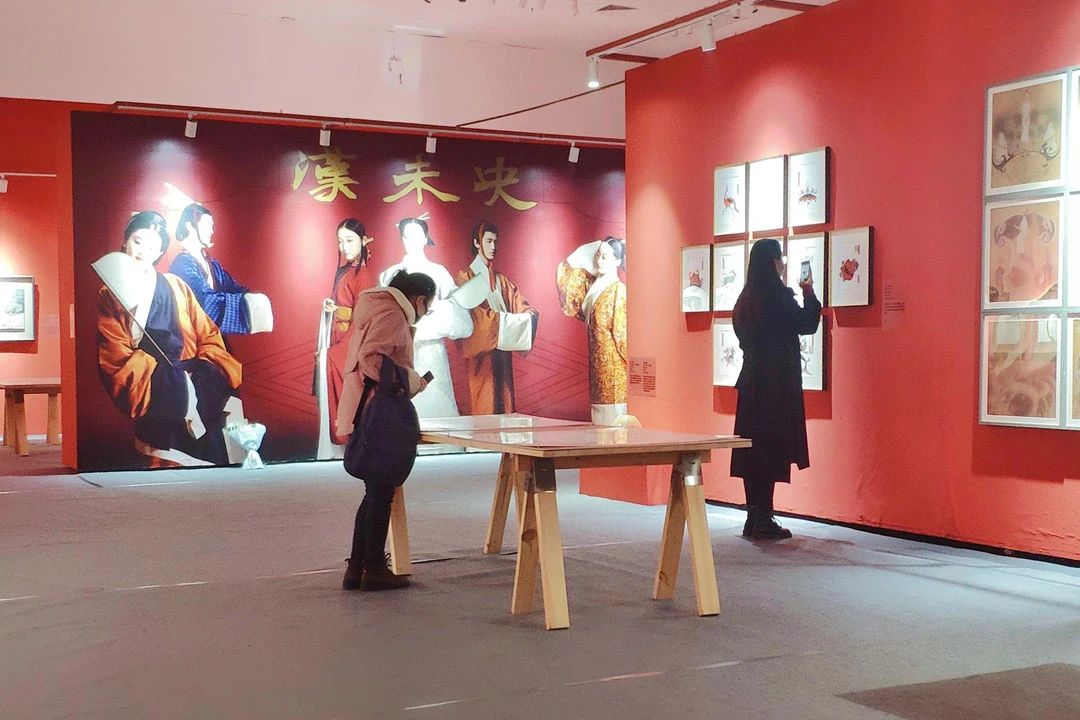In the heart of a bustling modern city, an extraordinary exhibition has unfurled its vibrant tapestry, inviting visitors to step through a portal of time. This isn't just any display of historical artifacts; it's a living, breathing testament to the enduring power of fashion and its ability to transcend centuries, cultures, and artistic mediums.
The exhibition, aptly titled "Beautiful Myths | Reflections of Chu and Han," marks the 50th anniversary of the excavation of the Mawangdui Han tombs (马王堆汉墓). However, this is no ordinary commemoration. Instead of simply showcasing ancient relics behind glass cases, the curators have orchestrated a magnificent fusion of past and present, where the fashions of the Chu and Han dynasties serve as muses for contemporary artists.
As visitors cross the threshold into the exhibition space, they are immediately enveloped in an atmosphere that blends the gravitas of ancient court with the sleek aesthetic of a modern gallery. The air seems to shimmer with the whispers of history, each artifact and artwork a thread in an intricate narrative tapestry that spans over two millennia.
The Silk Road of Creativity: Ancient Inspirations Meet Modern Expressions
The exhibition is thoughtfully divided into five sections: Heavenly Bestowment, Earthly Transformation, Human Affairs, Guidance, and Eternity. These poetic titles are more than mere categories; they represent the Chinese philosophical understanding of the cosmos and humanity's place within it. Through this lens, the 300-plus works by 38 artists take on a profound significance, each piece a meditation on the relationship between humans, nature, and the divine as expressed through the medium of clothing.
What sets this exhibition apart is its boldly interdisciplinary approach. Here, the boundaries between different art forms dissolve, much like the perceived barrier between past and present. Digital projections cast ethereal light on intricately woven textiles. Paintings inspired by Han dynasty motifs hang alongside sculptures that reimagine ancient silhouettes in contemporary materials. Delicate seal carvings echo the precision of embroidery techniques passed down through generations.
One of the most striking installations is a digital recreation of a silk robe discovered in the Mawangdui tombs. As visitors approach, sensors trigger a projection that overlays the ancient garment with shifting patterns inspired by modern fashion trends. This piece serves as a powerful metaphor for the exhibition's central theme: the continual reinvention and reinterpretation of cultural heritage.
In another corner, a series of lacquerware pieces catches the eye. At first glance, they appear to be ancient artifacts, their surfaces gleaming with the deep, rich colors characteristic of Han dynasty craftsmanship. Upon closer inspection, however, subtle details reveal their contemporary origin. The artist has incorporated microscopic QR codes into the traditional patterns, each linking to a different story about the cultural significance of lacquerware throughout Chinese history.
Weaving the Past into the Present: A Tapestry of Cultural Heritage
The exhibition doesn't shy away from addressing the complex relationship between fashion and social structures. One thought-provoking installation features a wall of mirrors, each framed by replicas of collars from different social classes in the Han dynasty. As visitors look at their reflections, they are prompted to consider how clothing has been used throughout history to denote status, and how these concepts persist or have evolved in modern society.
Interspersed throughout the exhibition are interactive stations where visitors can engage more deeply with the techniques and materials used in ancient Chinese textile production. At one booth, a master weaver demonstrates the intricate art of silk brocade, her fingers moving with hypnotic precision as she creates patterns that have adorned garments for thousands of years. Nearby, a touch-screen display allows visitors to experiment with different dyeing techniques, illustrating how the vibrant colors of ancient fabrics were achieved using natural materials.
The curators have also incorporated an olfactory element to the exhibition, working with perfumers to recreate the scents that might have permeated the air in a Han dynasty wardrobe. As visitors move through the space, subtle fragrances of cedar, musk, and various herbs enhance the immersive experience, providing a sensory bridge to the past.
One of the most popular sections of the exhibition is a virtual reality experience that transports visitors to a Han dynasty court. Donning VR headsets, participants find themselves standing in a grand hall, surrounded by courtiers in full regalia. As they move through the virtual space, they can examine the details of each garment up close, learning about the symbolism behind different colors, patterns, and accessories.
The exhibition has struck a chord with visitors from all walks of life. Scholars praise its academic rigor and innovative presentation of historical material. Art enthusiasts are captivated by the diverse range of contemporary works inspired by ancient aesthetics. Fashion designers speak of leaving the exhibition brimming with ideas for new collections that blend traditional elements with modern sensibilities.
But perhaps the most profound impact is on the general public. Many visitors express a newfound appreciation for the depth and sophistication of their cultural heritage. "I never realized how much meaning could be woven into a single piece of clothing," remarks one young visitor, her eyes wide with wonder as she examines a digital recreation of an empress's ceremonial robe.
As the sun sets and the exhibition lights cast a warm glow over the artifacts and artworks, a group of visitors gathers for one of the regular guided tours. The guide, an expert in both art history and textile conservation, weaves a narrative that brings each piece to life. She speaks not just of dates and dynasties, but of the human stories behind each garment and artwork. In her words, the silk threads and pigments become conduits for tales of love, ambition, tradition, and innovation.
As visitors reluctantly make their way to the exit, many linger, taking one last look at the harmonious blend of old and new. They leave with more than just memories of beautiful objects; they carry with them a renewed sense of connection to their cultural roots and an excitement for how these ancient traditions might continue to evolve and inspire in the future.
In a world that often seems to move at a dizzying pace, "Beautiful Myths | Reflections of Chu and Han" offers a moment of reflection, a chance to see how the threads of the past are inextricably woven into the fabric of our present and future. It stands as a testament to the enduring power of fashion not just as adornment, but as a form of cultural expression and a bridge across time.



